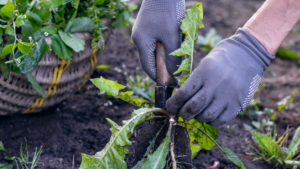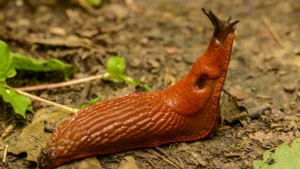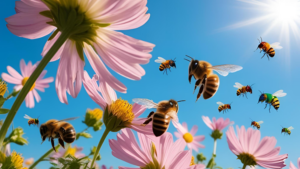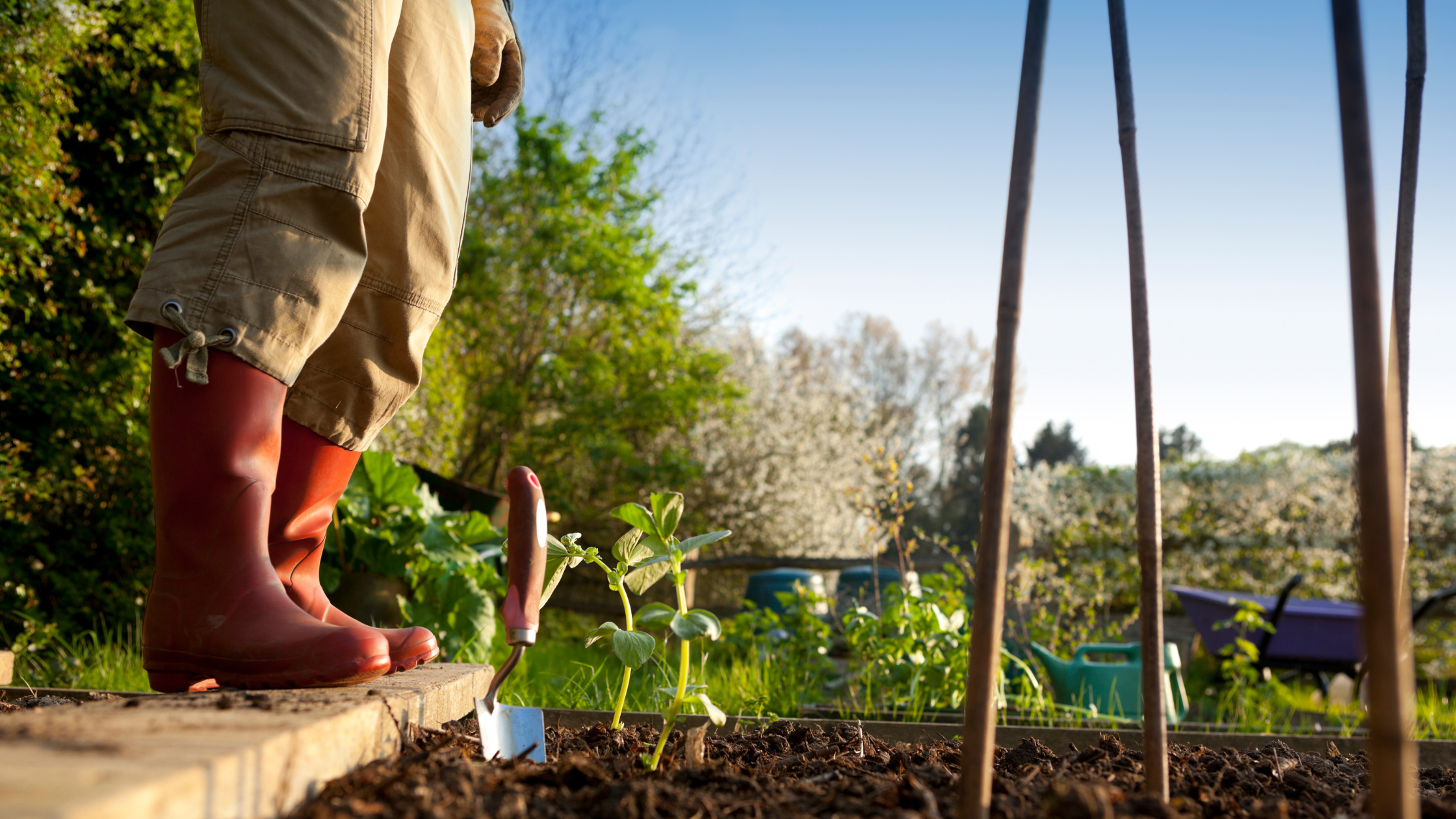.
As spring fully takes hold, April is a pivotal month in the gardening calendar. The soil is warming, daylight hours are increasing, and plants are awakening with renewed vigor. This month presents the perfect opportunity to set your garden up for success throughout the growing season. Let’s see what garden tasks wait for us in April:
#1 Weeding

Earlier in March, we pulled the mulch off the patches so that the sun could warm the soil. With rising temperatures, however, weeds will also find their way towards the light. Now, when they’re still small, is the right time to pull them out and keep the patches free for our vegetables.
#2 Harden off seedlings

Some of the vegetables we have seed-started indoors during the last weeks can be planted outdoors in April. Before we do that, we must harden them off so that they won’t get a shock when they get from that cozy, protected atmosphere indoors to the outside garden where temperatures are colder and the wind can blow harshly.
To harden off our seedlings, we put them outside in the shade. At first, for a few hours and each day longer. After about a week, they can be planted outside.
If you want to know which vegetables you can plant outdoors now, read on here.
#3 Sowing and planting outdoors
The greatest garden task in April is sowing and planting! So many vegetables can now be sown and planted outdoors, cabbage, leeks, radishes and peas being only some of them. For a comprehensive list of vegetables you can sow and plant outdoors in April, read on here.
#4 Fertilising
Our vegetables have outgrown the baby and toddler stage and are now teenagers. Ravenous teenagers! Which means they need plenty of food, or in that case, fertiliser. After planting our seedlings outdoors, they’ll be grateful for a healthy dose of organic liquid fertiliser to push their growth.
#5 Protect seedlings from cold
Sowing and planting outdoors brings so much fun, but remember that it can still get cold, especially during the nights. In my hardiness zone 7b, the danger of frosts won’t be over before mid-May! To protect our sensitive seeds and baby vegetables from harsh weather, we must cover them with a fleece. Although that won’t seem much, it will be enough to keep the air and soil underneath well above freezing.
#6 Protect cabbage and leeks from pests
Cabbage and leeks that we can plant outdoors now are especially prone to pests like the cabbage white butterfly and the leek fly. To protect them, we can cover them with a protective net, which is much lighter than a fleece. It won’t keep off the cold but only the pests. Most often, you can buy protective nets as a set with half-arches that you can stick across the vegetables and put the net on top. That way, our plants have plenty of room to grow while being safe from pests. Just make sure that you fix the net thoroughly into the ground.
By the way, celery is a good companion for cabbage. In the unlikely event that a cabbage fly finds its way under the net, it may find itself repelled by the celery smell.
#7 Protect your seedlings from snails and slugs

Is there any pest more feared than snails and slugs? I don’t think so. They are practically everywhere and, especially in spring, eat all they can find. Our seedlings are kind of a huge buffet to them, and if we want to harvest some vegetables for ourselves, we must make sure that snails and slugs won’t get near them!
A good way to keep those little suckers off our seedlings is to put snail collars around them which they can’t overcome. Or you get out in the wee hours of the morning or in the evening with a bucket and collect them. Choose your way, but I prefer the collars.
#8 Plant tomatoes in the greenhouse

By the end of April, you can plant your tomato seedlings into the greenhouse. It’s still a good deal too early for outdoors but in the protected atmosphere of a greenhouse – and if there’s no forecast of severe frosts – planting them in the greenhouse is okay.
#9 Plant strawberries
Another garden task in April is planting new strawberries and protecting them with a fleece. If you have strawberries in your garden already, remove all wilted leaves now. They may be infected with diseases and, by removing them, you can prevent those from spreading.
#10 Pollinators

All fruit-bearing vegetables, as well as fruit trees and bushes, need pollinators to produce their fruits. We can help attract all those bees and insects by sowing flower strips as insect pastures, either on the borders of our vegetable garden or in the patches between the plants. Calendula, for example, is not only a great attractor for pollinating insects but can be used for teas as well as an ingredient in many homemade body care products.
The gardening season has started! Let’s get out and green the world.
Can’t get enough? These articles may also interest you:
How to start a vegetable garden


0 Comments